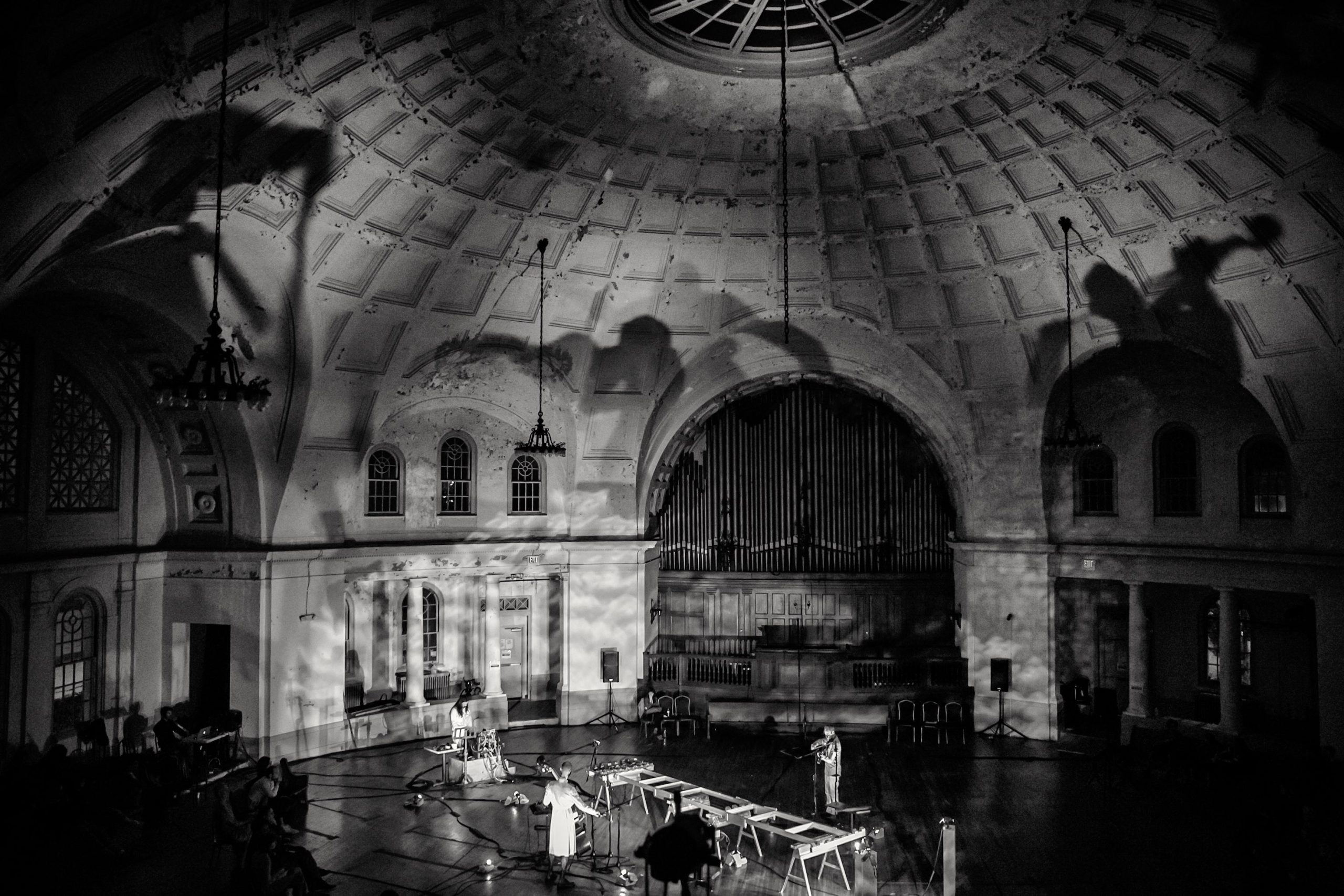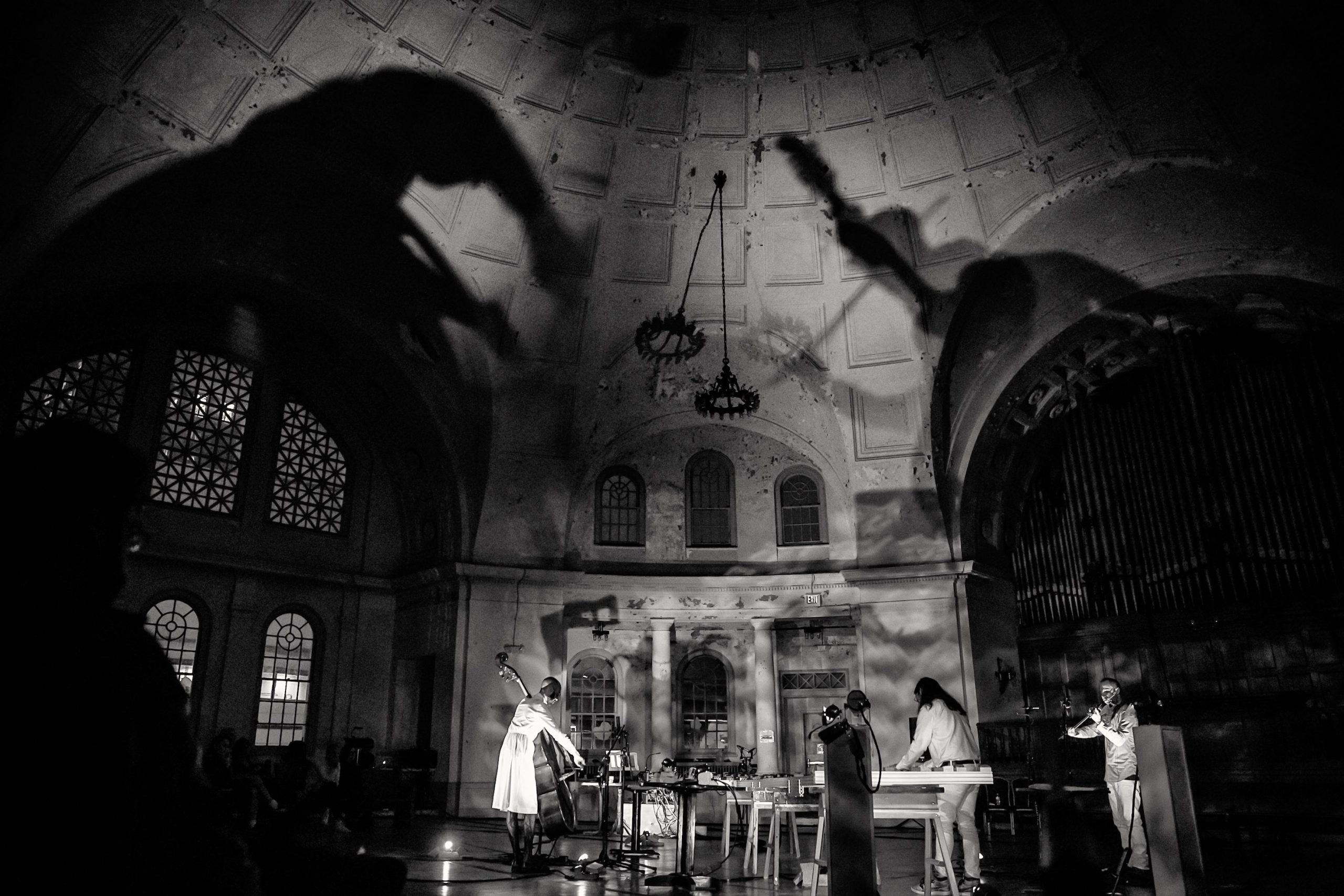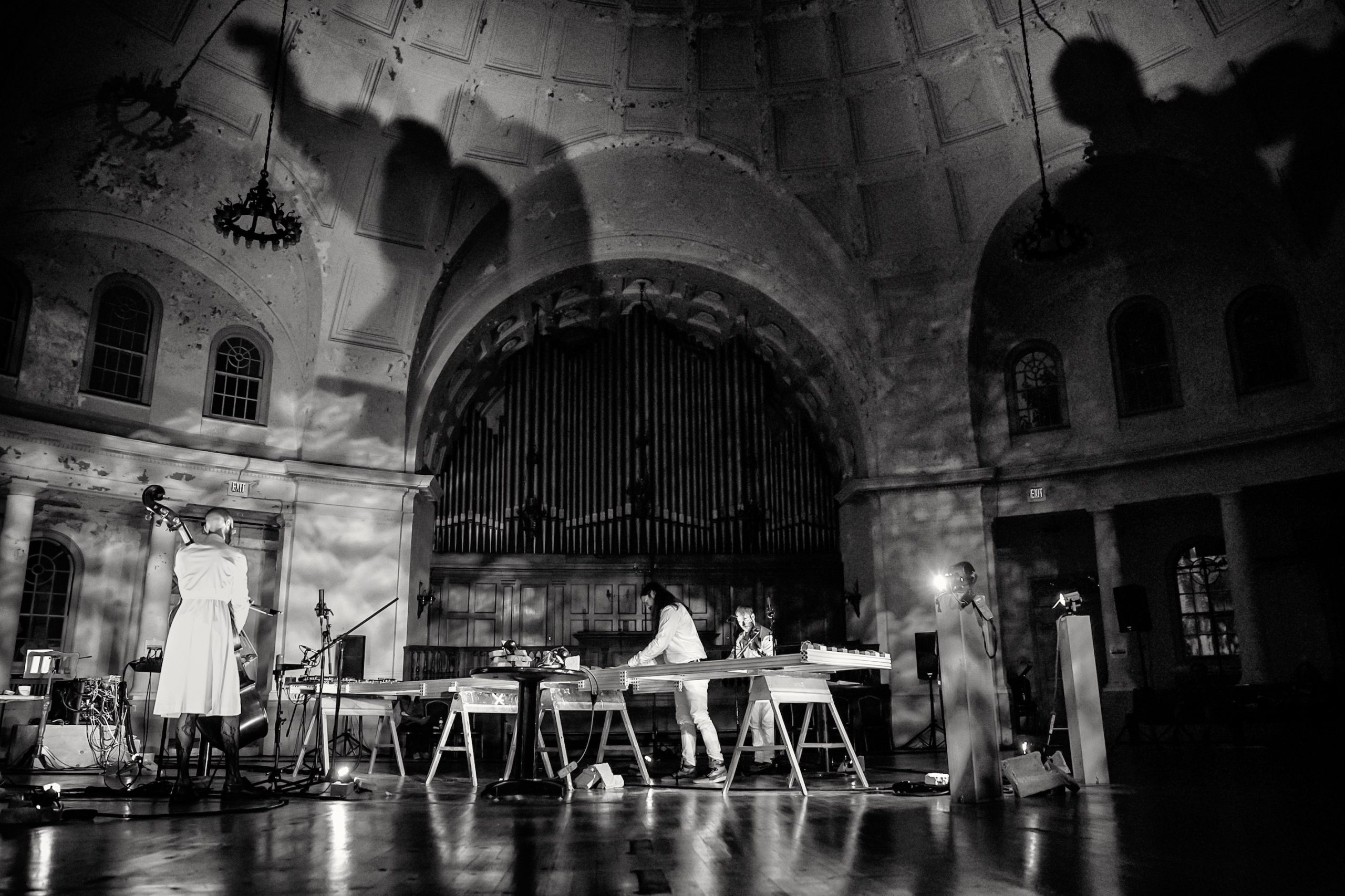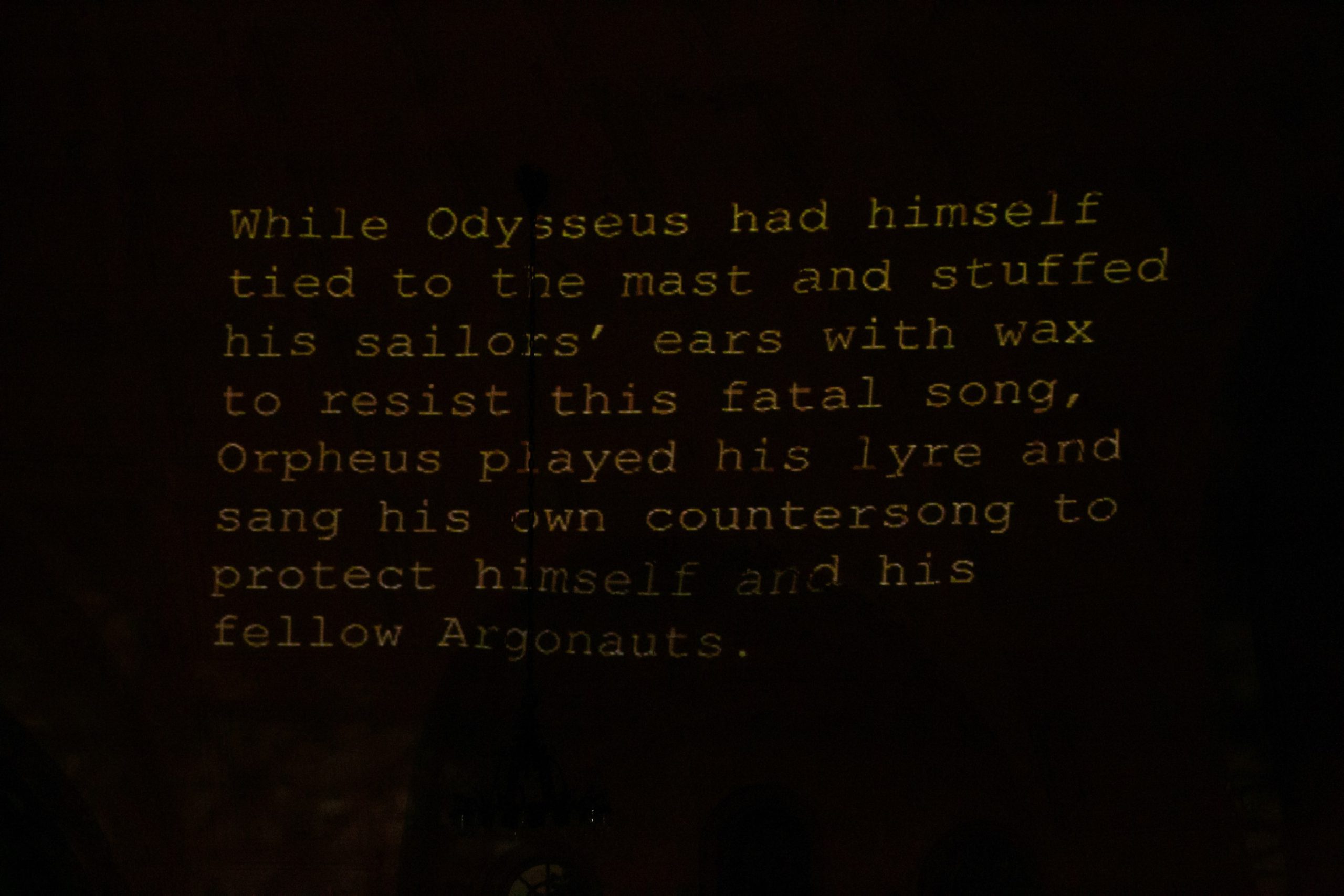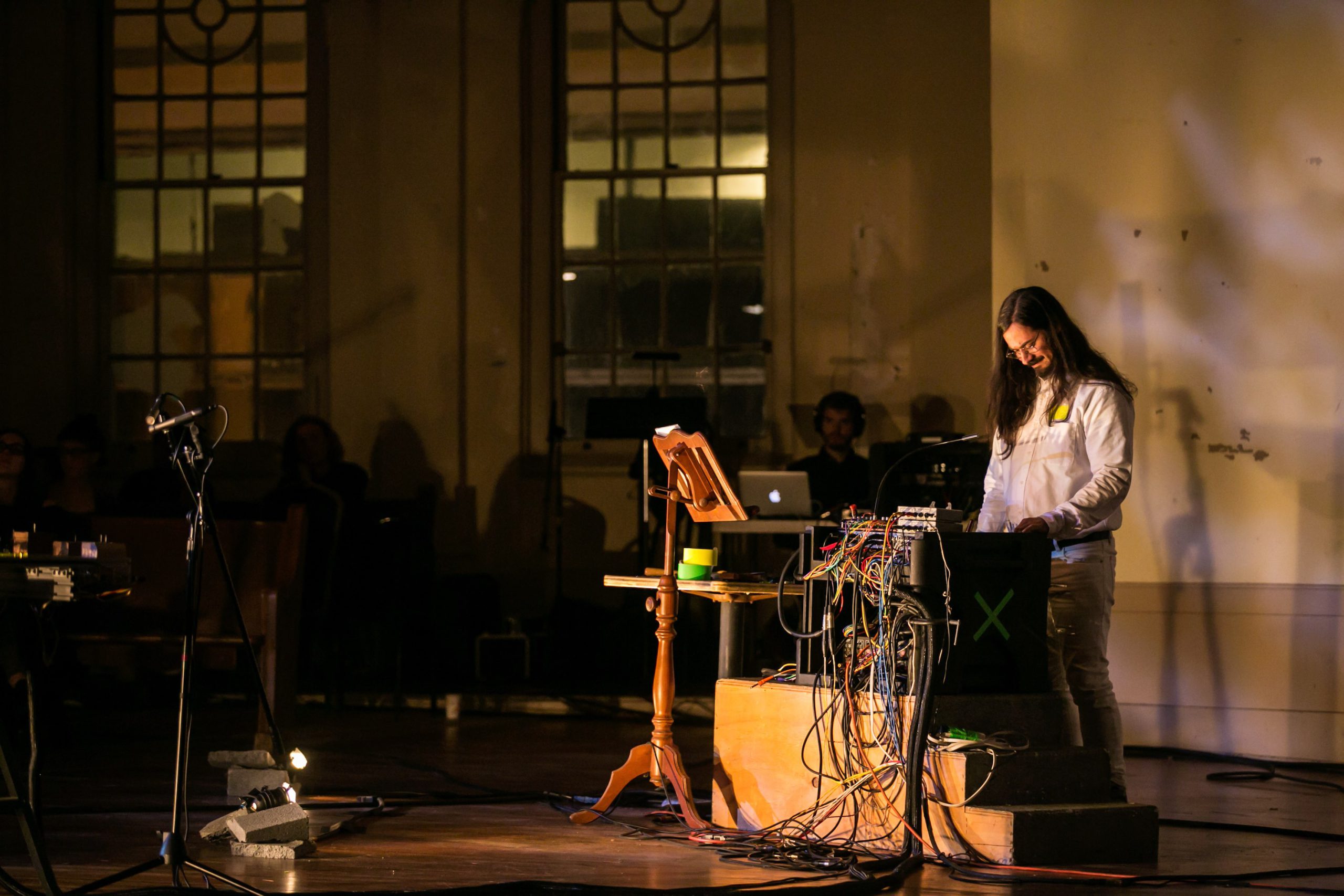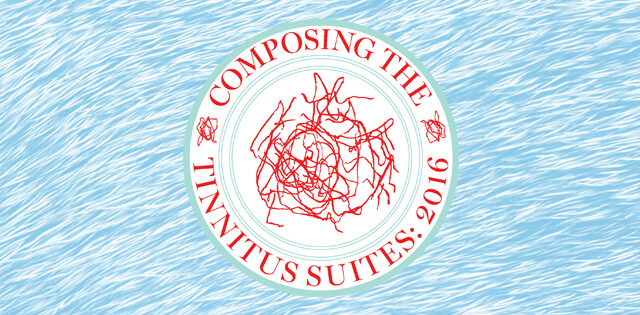
Composing the Tinnitus Suites: 2016
Let’s start this story with a little music, okay?
Composing the Tinnitus Suites: Mise-En Transcription
(2015-2016) 37:00
Composing the Tinnitus Suites: 2016 was a series of four concerts, taking place in the fabled Sanctuary of the Rotunda of West Philadelphia. Each concert explored the aesthetics of hearing damage, also had lectures or interviews—with neuroscientists, theorists, and disability rights activists—interspersed within the music, contextualizing the music with real theses about tinnitus.
This whole project was preceded by a long residency inside the Rotunda. Playing the Lady’s Harp everyday over the course of 4 months allowed me to go very deep in my performance technique. I also made significant changes to the harp, doubling its strings mandolin style, and focusing on tuning more precisely than ever before. Spending a long time in one space allows a different type of thinking—I was able to set up the speakers much more slowly, moving them a few feet at a time, and listening to the results.
But I also used the opportunity to try to infuse tinnital thinking into every aspect of the concert experience. For example, I commissioned Ranjit Bhatnagar to make a kind of noise-code poetry, using the Pubmed Database query of “tinnitus” as its corpus. Thus Ranjit was able to generate 300 unique sonnets an haiku using the totality of modern human scientific and medical knowledge about tinnitus (dating back to 1880). A single poem was included in each copy of the concert program booklet, meaning each audience member would receive a totally unique noise poem—a distillation of the experience of tinnitus, but completely textual and private. The program itself was over 80 pages, including substantial essays on tinnitus and music by media scholar Mack Hagood and psychoanalyst Monroe Street.
It’s difficult to convey the scope of this project in a website, so for now I’ll just focus on the three major creative projects I worked on, for it.
Mise-en Transcription
Composing the Tinnitus Suites is an ongoing series of work which explores the aesthetics of hearing damage. The aforementioned Lady’s Harp is the dark star of this music’s universe—most of my Tinnitus Music orbits around it in some way or form.
This piece is a transcription of an earlier recording from the Tinnitus Suites saga, which I created on the Lady’s Harp in 2011. After being commissioned by ensemble mise-en, I was curious whether I could make work in the Tinnitus Suites project, but without needing to do a site-specific sound installation—using the sounds of the Lady’s Harp without the burden of setting it up.
Using Fourier analysis, I approximated the harmonic content of the Harp’s strings and transcribed it for the six instrumentalists of ensemble mise-en. It occurred to me that this work could have been done more quickly with a computational process, but I did it all by hand, and savored the chance to pore over each measure, and decide what overtones should be allocated to each instrument. Thus the ensemble only plays what I was able to hear.
This piece is always played alongside tape accompaniment in loudspeakers. When it was premiered at the Rotunda in 2016, I followed up the mise-en piece with a solo on the Lady’s Harp.
Click the image, or this link, for the score!
The Tinnitus Trio
Listening to tinnitus is listening to the fundamental instability of one’s own listening. If the music is dangerously loud, I may be hurting for days afterward— and donning earplugs only intensifies the ringing sound. So, any musical situation that doesn’t incorporate the hearing damage as an operator is intrinsically out of tune. For me, being out of tune is not just about the tension of strings, but the consonance of ideas. I can’t stop my tinnitus, but I can tune myself to it.
Ellen Fullman Duet
The Lady’s Harp is indebted to Ellen Fullman, in fact—

